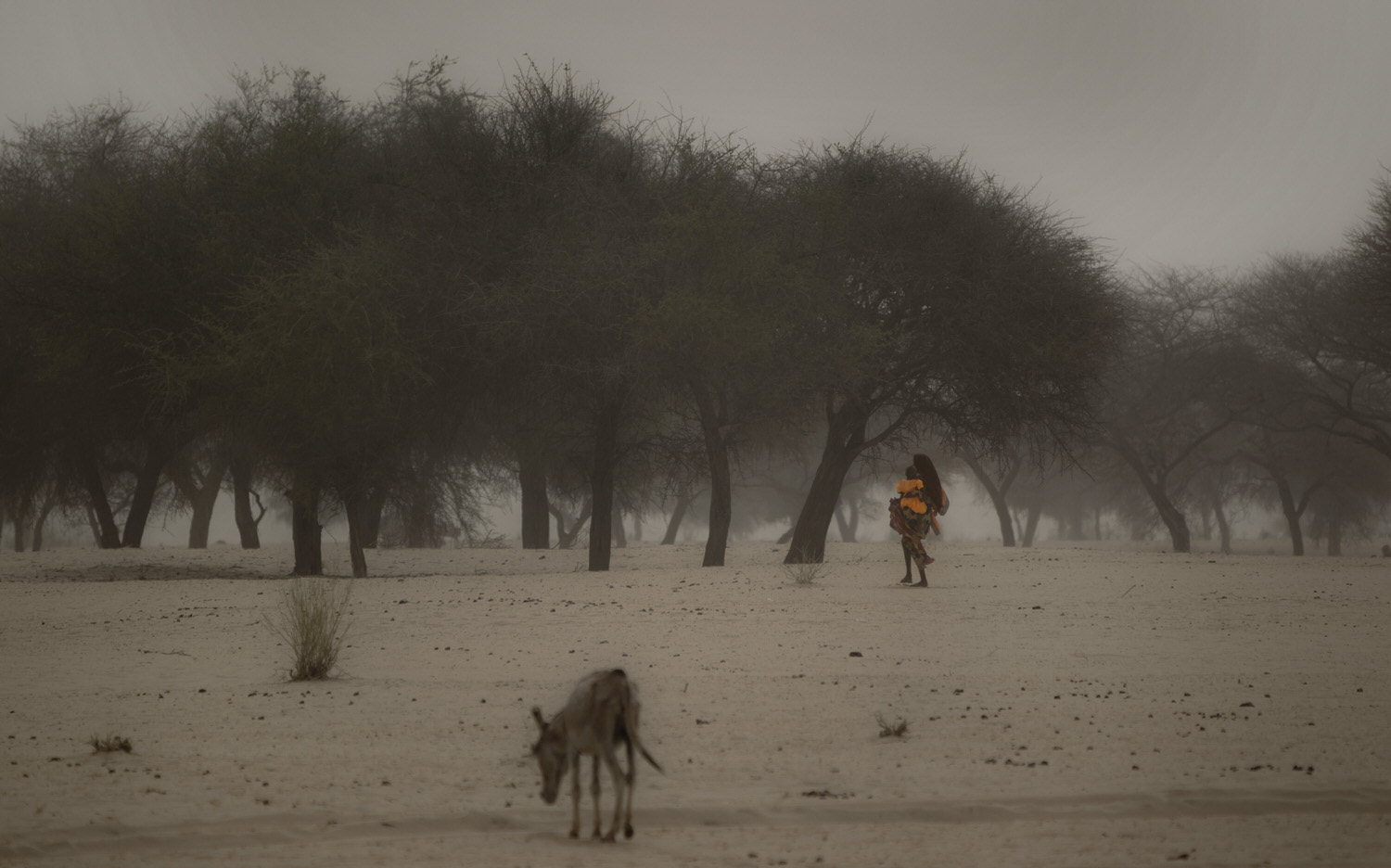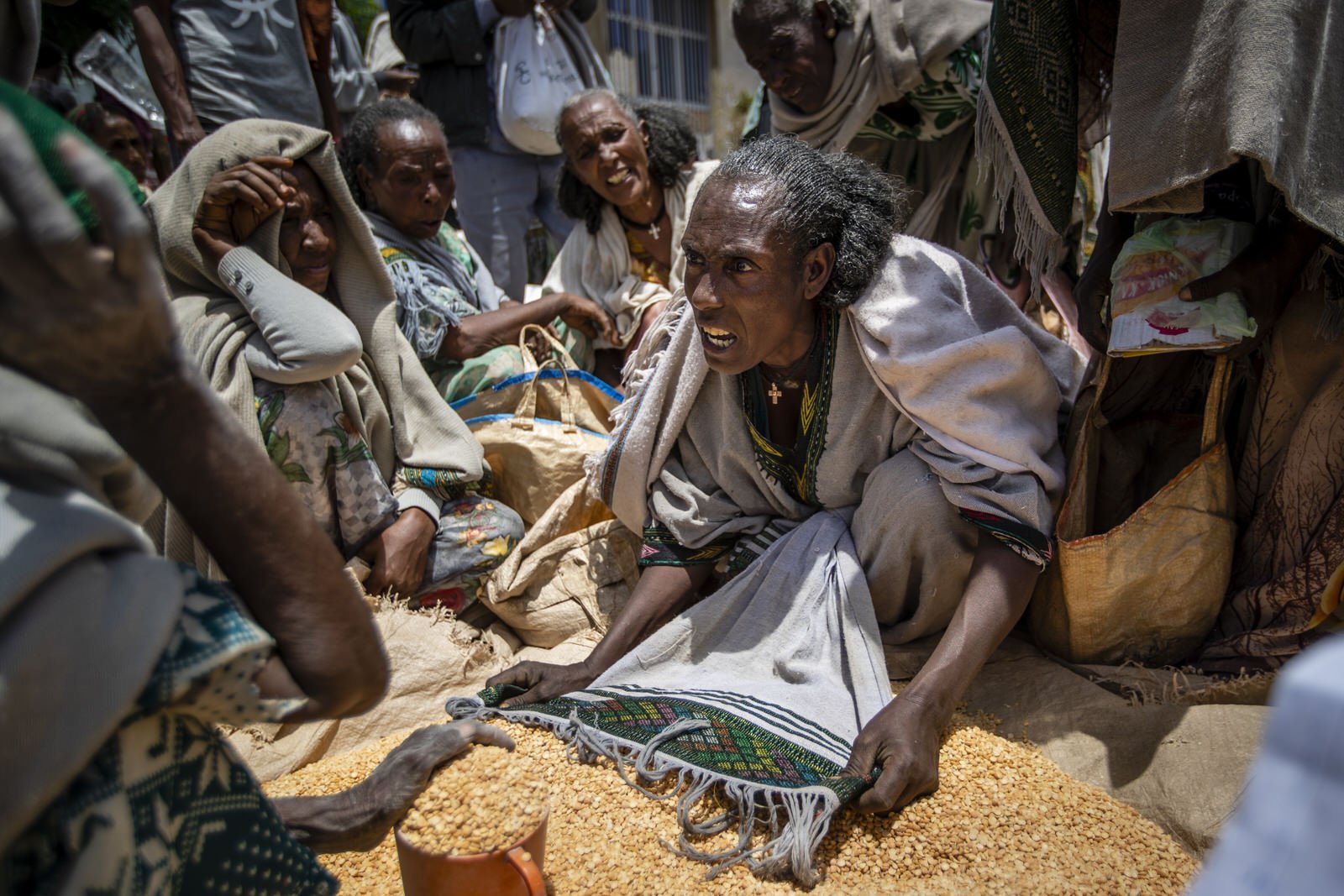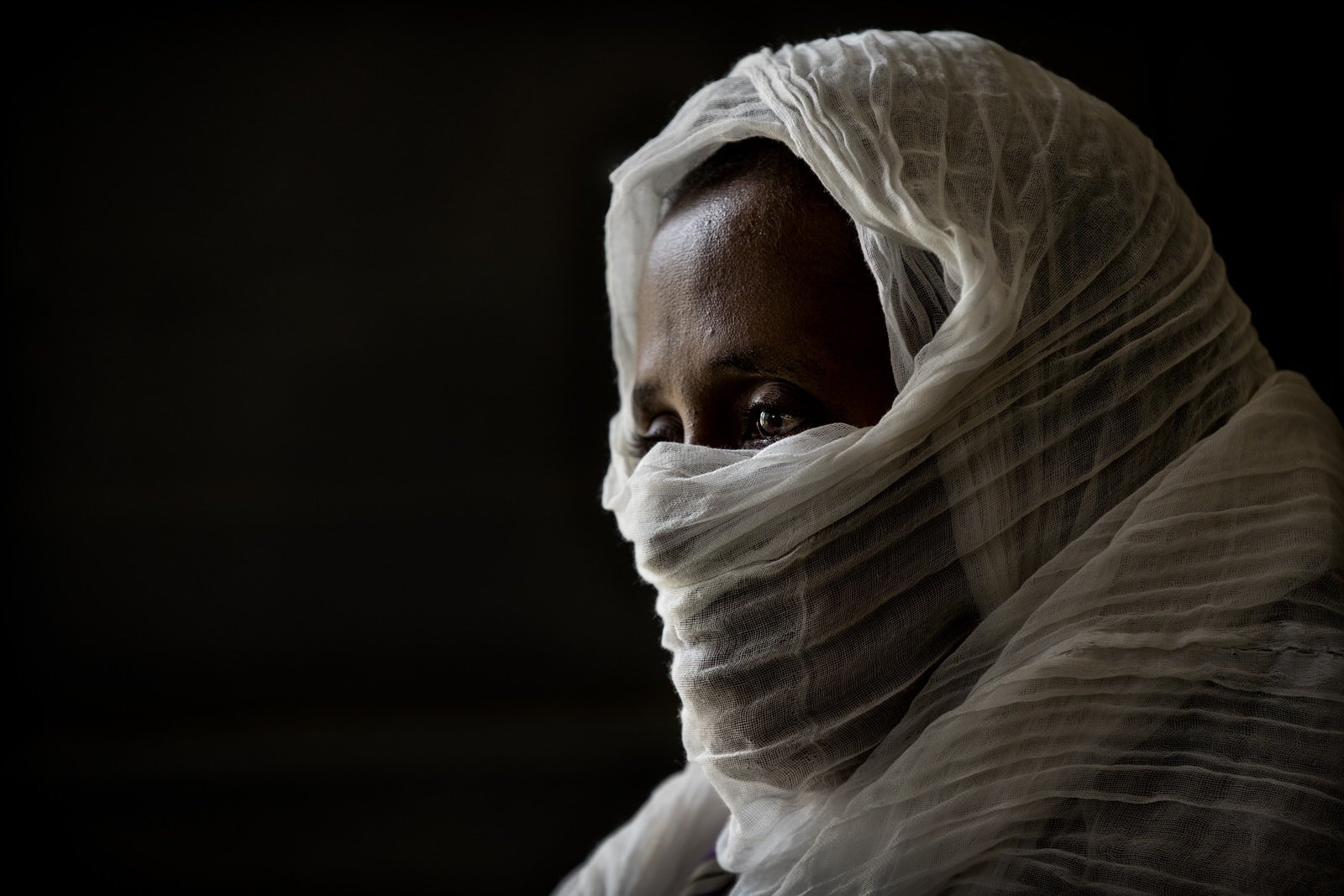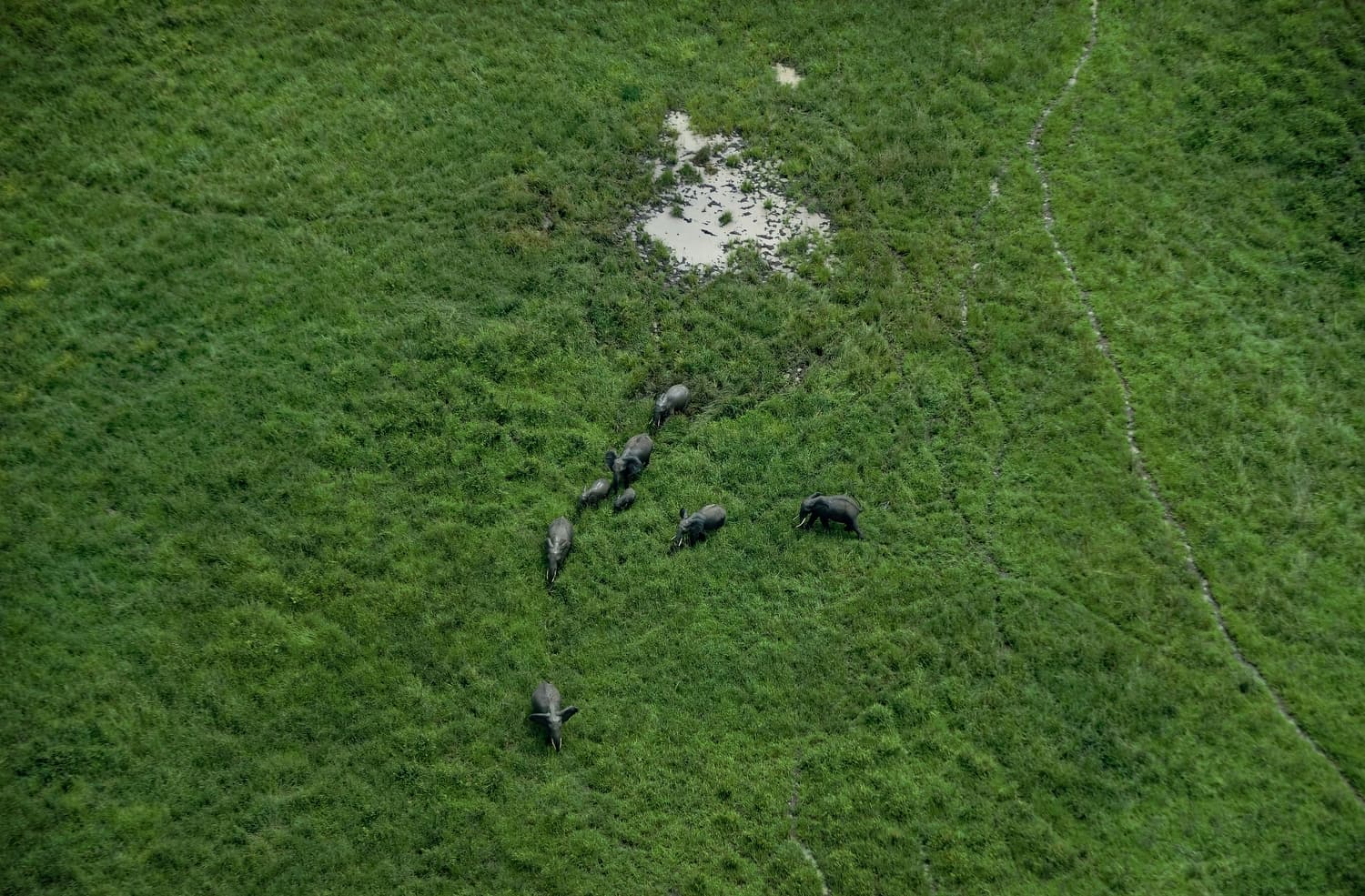East Africa Locust Outbreak
In early 2020, desert locusts by the billions started spreading out from Somalia across the East African region, descending into Ethiopia and northern Kenya in the worst outbreak in 70 years and if not stopped, risk becoming a plague. Climate experts have pointed to unusually heavy rains, aided by a powerful cyclone off Somalia in December, as a major factor in the outbreak.
(Use the white dot at the bottom-right of each image to view captions)

A farmer’s daughter waves her shawl in the air to try to chase away swarms of desert locusts from her crops, in Katitika village, Kitui county, Kenya Friday, Jan. 24, 2020. Desert locusts have swarmed into Kenya by the hundreds of millions from Somalia and Ethiopia, countries that haven’t seen such numbers in a quarter-century, destroying farmland and threatening an already vulnerable region. (AP Photo/Ben Curtis)

Swarms of desert locusts fly above trees in Katitika village, Kitui county, Kenya Friday, Jan. 24, 2020. Desert locusts have swarmed into Kenya by the hundreds of millions from Somalia and Ethiopia, countries that haven’t seen such numbers in a quarter-century, destroying farmland and threatening an already vulnerable region. (AP Photo/Ben Curtis)

A farmer looks back as she walks through swarms of desert locusts feeding on her crops, in Katitika village, Kitui county, Kenya Friday, Jan. 24, 2020. Desert locusts have swarmed into Kenya by the hundreds of millions from Somalia and Ethiopia, countries that haven’t seen such numbers in a quarter-century, destroying farmland and threatening an already vulnerable region. (AP Photo/Ben Curtis)

In this photo taken Saturday, Feb. 1, 2020, desert locusts feed on plants in Nasuulu Conservancy, northern Kenya. As locusts by the billions descend on parts of Kenya in the worst outbreak in 70 years, authorities are flying low over affected areas in small planes and spraying pesticides in what experts call the only effective control. (AP Photo/Ben Curtis)

In this photo taken Saturday, Feb. 1, 2020, ranger Gabriel Lesoipa is surrounded by desert locusts as he and a ground team relay the coordinates of the swarm to a plane spraying pesticides, in Nasuulu Conservancy, northern Kenya. As locusts by the billions descend on parts of Kenya in the worst outbreak in 70 years, authorities are flying low over affected areas in small planes and spraying pesticides in what experts call the only effective control. (AP Photo/Ben Curtis)

In this photo taken Saturday, Feb. 1, 2020, a desert locust feeds on an Acacia tree in Nasuulu Conservancy, northern Kenya. As locusts by the billions descend on parts of Kenya in the worst outbreak in 70 years, authorities are flying low over affected areas in small planes and spraying pesticides in what experts call the only effective control. (AP Photo/Ben Curtis)

In this photo taken Saturday, Feb. 1, 2020, desert locusts jump up from the ground and fly away as a cameraman walks past, in Nasuulu Conservancy, northern Kenya. As locusts by the billions descend on parts of Kenya in the worst outbreak in 70 years, authorities are flying low over affected areas in small planes and spraying pesticides in what experts call the only effective control. (AP Photo/Ben Curtis)

Farmer Kanini Ndunda reaches up with a shovel to shake tree branches to chase away swarms of desert locusts from her crops, in Katitika village, Kitui county, Kenya Friday, Jan. 24, 2020. Desert locusts have swarmed into Kenya by the hundreds of millions from Somalia and Ethiopia, countries that haven’t seen such numbers in a quarter-century, destroying farmland and threatening an already vulnerable region. (AP Photo/Ben Curtis)

Farmers try to chase away swarms of desert locusts from a tree on their land by shaking branches, banging sticks together, and shouting, in Katitika village, Kitui county, Kenya Friday, Jan. 24, 2020. Desert locusts have swarmed into Kenya by the hundreds of millions from Somalia and Ethiopia, countries that haven’t seen such numbers in a quarter-century, destroying farmland and threatening an already vulnerable region. (AP Photo/Ben Curtis)

A desert locust sits on a maize plant at a farm in Katitika village, Kitui county, Kenya Friday, Jan. 24, 2020. Desert locusts have swarmed into Kenya by the hundreds of millions from Somalia and Ethiopia, countries that haven’t seen such numbers in a quarter-century, destroying farmland and threatening an already vulnerable region. (AP Photo/Ben Curtis)

Swarms of desert locusts fly up into the air from crops in Katitika village, Kitui county, Kenya Friday, Jan. 24, 2020. Desert locusts have swarmed into Kenya by the hundreds of millions from Somalia and Ethiopia, countries that haven’t seen such numbers in a quarter-century, destroying farmland and threatening an already vulnerable region. (AP Photo/Ben Curtis)

A farmer’s son raises his arms as he is surrounded by desert locusts while trying to chase them away from his crops, in Katitika village, Kitui county, Kenya Friday, Jan. 24, 2020. Desert locusts have swarmed into Kenya by the hundreds of millions from Somalia and Ethiopia, countries that haven’t seen such numbers in a quarter-century, destroying farmland and threatening an already vulnerable region. (AP Photo/Ben Curtis)

In this photo taken Saturday, Feb. 1, 2020, a plane spraying pesticides flies over a swarm of desert locusts in Nasuulu Conservancy, northern Kenya. As locusts by the billions descend on parts of Kenya in the worst outbreak in 70 years, authorities are flying low over affected areas in small planes and spraying pesticides in what experts call the only effective control. (AP Photo/Ben Curtis)

In this photo taken Tuesday, Feb. 4, 2020, Somali pest-control sprayers demonstrate their work on the thorny bushes in the desert that is the breeding ground of desert locusts for a visiting delegation of Somali ministry officials and experts from the Food and Agriculture Organization (FAO), in the desert near Garowe, in the semi-autonomous Puntland region of Somalia. The desert locusts in this arid patch of northern Somalia look less ominous than the billion-member swarms infesting East Africa, but the hopping young locusts are the next wave in the outbreak that threatens more than 10 million people across the region with a severe hunger crisis. (AP Photo/Ben Curtis)

In this photo taken Tuesday, Feb. 4, 2020, young desert locusts that have not yet grown wings jump in the air as they are approached in the desert near Garowe, in the semi-autonomous Puntland region of Somalia. The desert locusts in this arid patch of northern Somalia look less ominous than the billion-member swarms infesting East Africa, but the hopping young locusts are the next wave in the outbreak that threatens more than 10 million people across the region with a severe hunger crisis. (AP Photo/Ben Curtis)

In this photo taken Tuesday, Feb. 4, 2020, Somali pest-control sprayers demonstrate their work on the thorny bushes in the desert that is the breeding ground of desert locusts for a visiting delegation of Somali ministry officials and experts from the Food and Agriculture Organization (FAO), in the desert near Garowe, in the semi-autonomous Puntland region of Somalia. The desert locusts in this arid patch of northern Somalia look less ominous than the billion-member swarms infesting East Africa, but the hopping young locusts are the next wave in the outbreak that threatens more than 10 million people across the region with a severe hunger crisis. (AP Photo/Ben Curtis)

In this photo taken Wednesday, Feb. 5, 2020, young desert locusts that have not yet grown wings jump in the air as they are approached, as a visiting delegation from the Food and Agriculture Organization (FAO) observes them, in the desert near Garowe, in the semi-autonomous Puntland region of Somalia. The desert locusts in this arid patch of northern Somalia look less ominous than the billion-member swarms infesting East Africa, but the hopping young locusts are the next wave in the outbreak that threatens more than 10 million people across the region with a severe hunger crisis. (AP Photo/Ben Curtis)

In this photo taken Tuesday, Feb. 4, 2020, Somali pest-control sprayers demonstrate their work on the thorny bushes in the desert that is the breeding ground of desert locusts for a visiting delegation of Somali ministry officials and experts from the Food and Agriculture Organization (FAO), in the desert near Garowe, in the semi-autonomous Puntland region of Somalia. The desert locusts in this arid patch of northern Somalia look less ominous than the billion-member swarms infesting East Africa, but the hopping young locusts are the next wave in the outbreak that threatens more than 10 million people across the region with a severe hunger crisis. (AP Photo/Ben Curtis)

Swarms of desert locusts fly up into the air from trees in Katitika village, Kitui county, Kenya Friday, Jan. 24, 2020. Desert locusts have swarmed into Kenya by the hundreds of millions from Somalia and Ethiopia, countries that haven’t seen such numbers in a quarter-century, destroying farmland and threatening an already vulnerable region. (AP Photo/Ben Curtis)

























